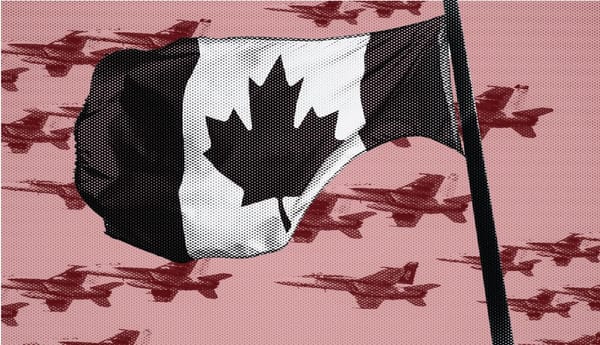Earlier this week, the federal government announced a series of measures intended to help people financially weather the coming weeks — and potentially months — of social distancing and isolation.
These policies, framed as a “first phase” of a larger response, direct $27 billion to individuals through four mechanisms:
- $2 billion allocated to increase the Canada Child Benefit by $300 per child
- $10 billion allocated to an Emergency Care Benefit of $900 bi-weekly for up to 15 weeks available to: a) workers without access to Employment Insurance (EI) who are sick, quarantined, or have been directed to self isolate; b) workers without access to EI caring for family members sick with COVID-19; c) workers with or without access to EI staying home to care for children who are sick with COVID-19 or cannot go to school due to closures.
- $5 billion allocated to an Emergency Support Benefit for workers without access to EI who are now facing unemployment.
- $5.5 billion allocated to increasing the GST credit for low-income individuals.
While these measures are necessary, they’re insufficient to address the financial catastrophe many Canadians are about to experience as rent, mortgage payments and other bills come due at the end of the month.
Coming Up Short
The goal of policymakers during this crisis must be to keep people who can’t work financially solvent. Because of the need for social distancing and isolation, the number of people in this category is far larger than usual. Aside from those who can work from home and essential workers, most people are going to be without work — and therefore an income — for at least four weeks, and likely much longer.
A well-designed welfare state would absorb this disruption without much trouble, and handling a crisis like this one would just be a matter of scaling up resources for already existing programs. Unfortunately, as I wrote last week, Canada’s welfare state — particularly our EI regime — is hopelessly inadequate during the best of times.
The task for the federal government, then, is not only to resource welfare institutions properly, but build new ones on the fly. This initial attempt at a first response doesn’t achieve that goal.
The largest group of people who will soon need financial assistance are those who can’t work because of the pandemic but aren’t themselves sick. This includes people working in most restaurants, bars, cafes and retail outlets. Those working in the travel or hospitality sector are also likely to temporarily lose their job. Air Canada has already laid off 5,000 flight attendants. Ancillary services that support these industries will also be hit hard.
Some affected workers will be eligible for EI, but many will not. Only 28 per cent of workers earning $15 per hour or less qualified for EI in 2017. Many of these jobs are characterized by low wages, part-time hours and short job tenure, factors limiting EI eligibility.
This brings us to the central problem with the government’s response: the distinction between the Emergency Care Benefit and the Emergency Support Benefit.
The government has allocated $10 billion to the Care Benefit, which will provide EI-like benefits to those without EI who are sick or caring for a sick family member. This is a good thing.
However, most Canadians are unlikely to develop symptoms of COVID-19 infections even if they do become sick, and those who do will not be sick for the duration of the period in which social distancing measures are in effect. Consequently, the Emergency Care Benefit will not guarantee financial solvency for most Canadians who lose their income throughout this crisis, whether or not they become sick.
Those who do not become sick but nonetheless lose their income because of COVID-19 will be eligible for the Emergency Support Benefit. The details of this benefit are sketchy right now, but we do know the government has only allocated $5 billion to this program, far too little to meaningfully offset impending income losses.
Take, for example, the retail, food services and accommodation industries, three sectors that will be hit hardest by the crisis. More than four million Canadians work in these industries, all of which have been basically ordered to shut down in order to encourage social distancing.
While this is likely a conservative projection, assume 75 per cent of workers in these sectors face temporary lay offs, and only half of those are eligible for EI. That means 1.5 million Canadians in these sectors alone will have no income. Divided among 1.5 million people, the $5 billion allocated for the Support Benefit already equates to only $3,300 per person. Remember: This is a figure arrived at using conservative assumptions and accounting for just a fraction of the people who will ultimately need support. The actual piece of that $5 billion available per person is likely considerably less than $3,300.
The federal government’s support package doesn’t include nearly enough resources for those who will face unemployment during the pandemic. Given that this is likely to be the largest group of people who need support in the coming months, this shortfall alone dooms the relief effort to failure.
How To Fix It
Fortunately, keeping people solvent during periods of temporary joblessness is an extremely tractable problem other countries have solved. The pandemic adds another layer of complexity to this challenge, but this too can be addressed through relatively simple policy measures.
1. The federal government should significantly expand EI eligibility and benefits. All unemployed, non-elderly adults regardless of the type of work they have done most recently should qualify. The duration of benefits should be increased to one year, and the benefit amount should be increased to 100 per cent of average prior earnings up to a maximum of $5,100 per month (equivalent to the median household income as of 2018). This would immediately provide relief for those facing temporary unemployment due to the crisis.
2. The EI Sickness Benefit amount should be increased. Under the existing EI regime, workers who don’t have employer-sponsored paid sick leave and do qualify for EI can receive sickness benefits of 55 per cent of average past earnings up to $573 per week for up to 15 weeks. This should be expanded to cover 100 per cent of average past earnings up to $5,100 per month, matching the standard EI benefit detailed above.
3. The EI Sickness Benefit should be expanded to cover carers. The EI Sickness Benefit should be expanded to cover those who must miss work to care for a sick family member.
Together, these three measures would guarantee financial solvency to nearly everyone who faces temporary unemployment due to the pandemic, is infected with the virus or who must take time off work to care for someone infected with the virus.
4. The federal government should create a universal cash benefit for the duration of the emergency. No program is perfect, and, particularly in a time of crisis, people are bound to fall through the cracks. That is why for the duration of this emergency, the government should send cheques to everyone directly. The amount transferred could be scaled up or down as needed to keep demand in the economy and ensure everyone can purchase basic goods, like groceries.
5. Governments at all levels should take steps to limit large expenses like rent, mortgage payments and utility bills. Jurisdictional issues constrain the ability of the federal government to legislate on some of these issues, but that doesn’t mean they’re powerless.
As writer Jon Shell has suggested in a thoughtful proposal, a variety of carrots and sticks can be deployed by the federal government to promote desired outcomes. This method should be used to push mortgage lenders to defer or waive payments for the duration of the crisis. Some progress has already been made on this front, but it’s not clear all mortgage holders will be protected.
With this relief secured, rents should also be deferred or waived. If Provincial governments are unwilling to legislate on this matter, the federal government should levy punitively large taxes on landlords who refuse to comply — at least enough to offset the income they would collect from tenants.
6. The federal government should bailout companies in exchange for equity. With demand drying up, many businesses will require bailouts from the federal government to stay afloat. Key industries should be bailed out to avoid an even more harmful economic crash, but these bailouts shouldn’t be structured in the form of loans or, even worse, no-strings attached transfers.
Instead, the federal government should take ownership stakes in companies at market rates, just as the United States Treasury did with their 2010 bailout of General Motors. Structuring bailouts in this way ensures the public will benefit when markets rebound after the crisis. Ideally, the government would maintain ownership shares in these companies and pay out dividends to the public.
A Crisis We Can Overcome
The federal government’s “first phase” support package is a welcome initial step, but doesn’t go nearly far enough, and will ultimately leave millions of Canadians financially insolvent in a matter of weeks. The cascading effects of this catastrophe are painful to contemplate, but they will begin to be felt within a matter of days. People who last week were gainfully employed will soon be unable to cover groceries and basic necessities, let alone rent, utilities, interest on credit card debt and mortgage payments.
If we are to avoid this outcome, the Federal government must move quickly and aggressively to ramp up our welfare state and rescue the broader economy. The six policies detailed above would ensure Canadians remain financially solvent for the duration of this emergency, and that our economy is on sound footing to recover once it’s finished.
The COVID-19 pandemic is a serious crisis, but its economic impact can be solved through a number of policy measures proven to work in countries around the world. The question before us is not what must be done, but do our political leaders have the will to do it?






